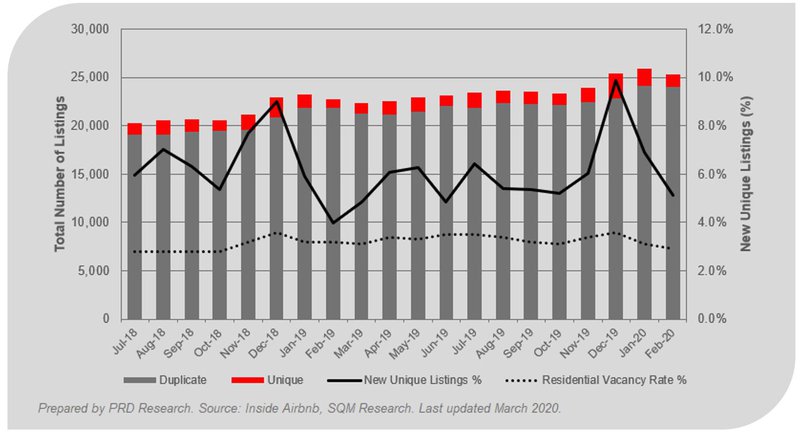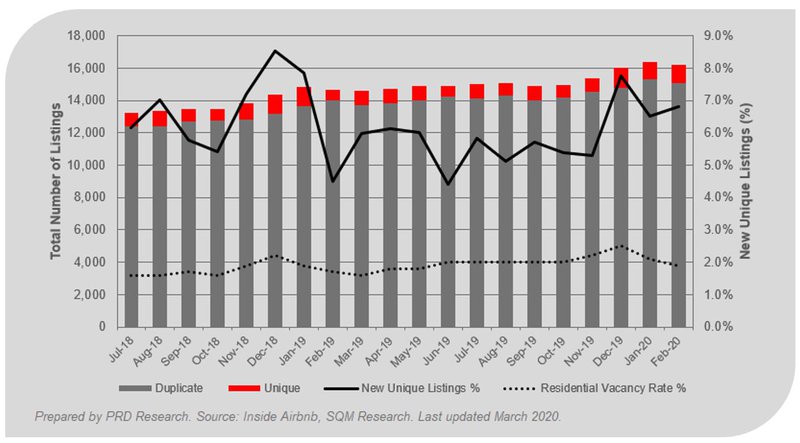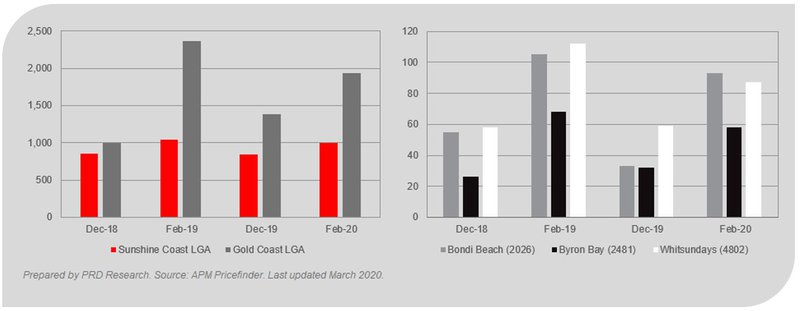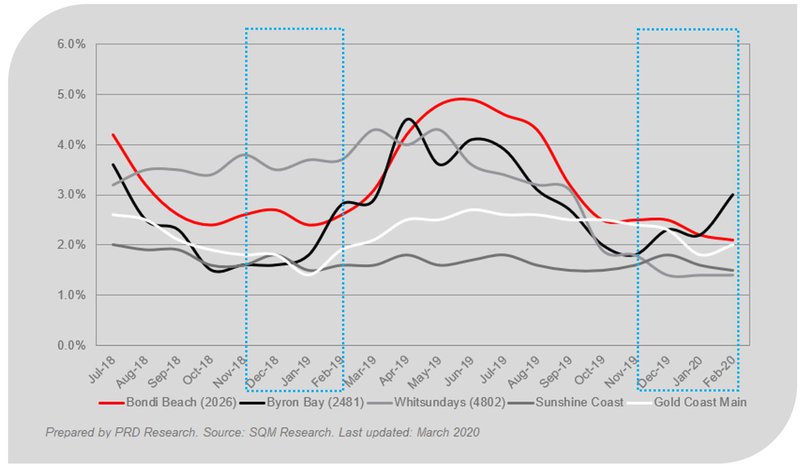From the desk of Chief Economist - Why you should invest in property now
COVID-19 has taken us all by surprise and its power has rapidly weakened our economy over the past three months. So much so that the Reserve Bank of Australia (who were positive in their projection based on property market data and held the cash rate stable in February 2020), cut the cash rate in March 2020.

COVID-19 has taken us all by surprise and its power has rapidly weakened our economy over the past three months. So much so that the Reserve Bank of Australia (who were positive in their projection based on property market data and held the cash rate stable in February 2020), cut the cash rate in March 2020.
The tourism and education industries were the first affected, with tourists cancelling holidays due to travel restrictions, and education facilities experiencing a reduction in enrolments.
“With all the uncertainty, it is no surprise investors may be considering moving their rental property from the short-term market to the long-term. Fear of oversupply and a weaker rental market is also a possibility, especially for capital cities with high and/or increasing vacancy rates.” - Dr Diaswati Mardiasmo.
The questions are… “Will investors move stock? If so, to what extent and how will this impact the rental market?” - Associate Professor Artemis Chang, QUT Business School.
Property Investment – Capital Cities
Airbnb data for Sydney and Melbourne shows that since December 2019, there has been interesting trends for ‘duplicate’ and ‘unique listings’ for the ‘whole house only’ option. Duplicate listings refer to a specific property listing ID number that is found in the subsequent month – for example, a property listing ID that was present in January 2020 and February 2020 Airbnb data would be classed as a duplicate listing.
In Sydney, there has been an increase in duplicate listings between December 2019 and February 2020. In December 2019 there were 25,374 listings of which 22,865 were duplicates from November 2019. In February 2020, there were 25,306 listings of which 24,007 were duplicates from January 2020.
This suggests that properties from previous months are still actively listed on Airbnb and have not been moved to the long-term rental market. This data potentially demonstrates that Airbnb owners are waiting longer for their properties to be rented.
Melbourne data shows the same ‘duplicate’ and ‘unique listings’ trend as Sydney. Not surprisingly, unique listings between December 2019 – February 2020 have declined, suggesting new investors are wary of adding to the Airbnb market, and old/current investors are remaining.
Sydney Airbnb Market

Melbourne Airbnb Market

Vacancy rates in both Sydney and Melbourne continue to decline. In December 2019 vacancy rates for Sydney and Melbourne were 3.6% and 2.5% respectively, and in February 2020 they were 2.9% and 1.9% respectively. These figures are both under the Real Estate Institute of Australia’s healthy benchmark of 3.0% and a declining trend suggests healthier rental demand.
Presently, data shows that investor confidence in capital cities should not waver as there is a healthier vacancy rate in both Sydney and Melbourne. Despite the decline in unique listings in the short-term rental market; which may suggest the property has been added to the long-term market instead; there does not appear to be any severe effects on the long-term market.
Property Investment – Tourist / Holiday Destinations
Due to tourists delaying or cancelling holiday plans, the short-term rental market in ‘tourist-heavy’ areas may be impacted. Areas such as: Gold Coast, Sunshine Coast, Bondi Beach, Byron Bay, and Whitsundays/Airlie Beach.
As Airbnb data is not available for these areas, PRD has assessed the long-term rental market for unprecedented changes. The following was found:
1. The trend of ‘total number of properties rented’ in all tourist-heavy areas has remained unchanged. There was an increase in the number of properties in the long-term rental market between December 2018 – February 2019, which was repeated in December 2019 – February 2020. For example, in Byron Bay the number of rentals in the long-term market increased from 26 to 68 between December 2018 – February 2019, and also increased between December 2019 – February 2020, from 32 to 58.
2. By comparing the December 2018 – February 2019 and December 2019 – February 2020 patterns, we see there hasn’t been a significant increase in the long-term market. In fact, the number of rentals in the long-term market has decreased. For example, in the Whitsundays the number of rentals on the long-term market increased from 58 to 112 between December 2018 – February 2019, which is almost double the increase; but only an increase of 47.5% (from 59 to 87 between December 2019 – February 2020).

3. Vacancy rates in all tourist-focused areas have remained consistent between December 2018 – February 2019 and December 2019 – February 2020. For example, vacancy rates in Bondi Beach tend to decline between December 2018 – February 2019 from 2.7% to 2.6%. This pattern is repeated between December 2019 – February 2020, declining from 2.5% to 2.1%.
4. February 2020 vacancy rates in all tourist-focused areas are classified as ‘healthy’, under the Real Estate Institute Australia’s benchmark of 3.0%. In fact, for some areas such as Sunshine Coast and Whitsundays it is at a much healthier rate.

Overall, the long-term rental market in tourist destinations is not showing an unprecedented increase that would put pressure on vacancy rates. There is evidence of a slowdown in the number of rental properties being added to the market, in comparison to December 2018 – February 2019, which is reflective of the current COVID-19 induced conditions. On a positive note, this also means there is no added pressure to the long-term rental market, and given healthy vacancy rates conditions this should build investor confidence.



